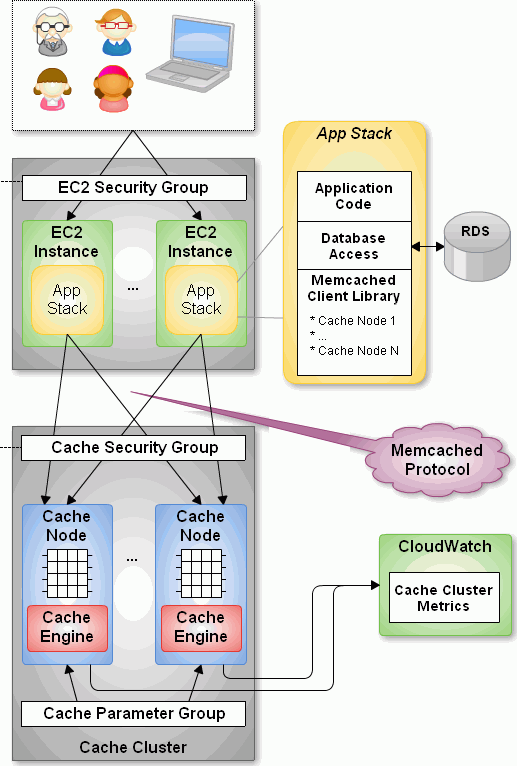Amazon ElastiCache – Memcached server cloud hosting for Amazon AWS
Amazon Web Services announces a new product, Amazon ElastiCache – which is basically using Memcached server – a scalable distributed in-memory cache server for cloud hosting services such as Amazon EC2. Check out Amazon AWS blog for further details on Amazon ElastiCache. Amazon ElastiCache FAQ is here.
ElastiCache feature set resembles more closely to the more developed version of Memcached called Membase – minus the Membase clustering, replication and virtual node support ? ElastiCache will probably help lower the Amazon EC2 memory requirements for each EC2 based web server, if you separate memcached server to it’s own Amazon ElastiCache instance ?
Memcached servers can be very useful for vBulletin usage where off loading vBulletin datastore and other database queries to Memcached server dramatically reduce MySQL database server load – in some cases saving up to 3,500 queries/second!
Unfortunately, looks like you can only pair Amazon ElastiCache instances with Amazon EC2 and not with non-EC2 web servers hosted outside of Amazon AWS’s network as explained in their FAQ.
Security
Q: How do I control access to Amazon ElastiCache? Amazon ElastiCache allows you to control access to your Cache Clusters through Cache Security Groups. A Cache Security Group acts like a firewall, controlling network access to your Cache Cluster. By default, network access is turned off to your Cache Clusters. If you want your applications to access your Cache Cluster, you must explicitly enable access from hosts in specific EC2 security groups. This process is called ingress. To allow network access to your Cache Cluster, create a Cache Security Group and link the desired EC2 security groups (which in turn specify the EC2 instances allowed) to it. The Cache Security Group can be associated with your Cache Cluster at the time of creation, or using the “Modify” option on the AWS Management Console.
Please note that IP-range based access control is currently not enabled for Cache Clusters. All clients to a Cache Cluster must be within the EC2 network, and authorized via security groups as described above.
Q: Can programs running on servers in my own data center access Amazon ElastiCache? No. Currently, all clients to an ElastiCache Cluster must be within the Amazon EC2 network, and authorized via security groups as described here.

